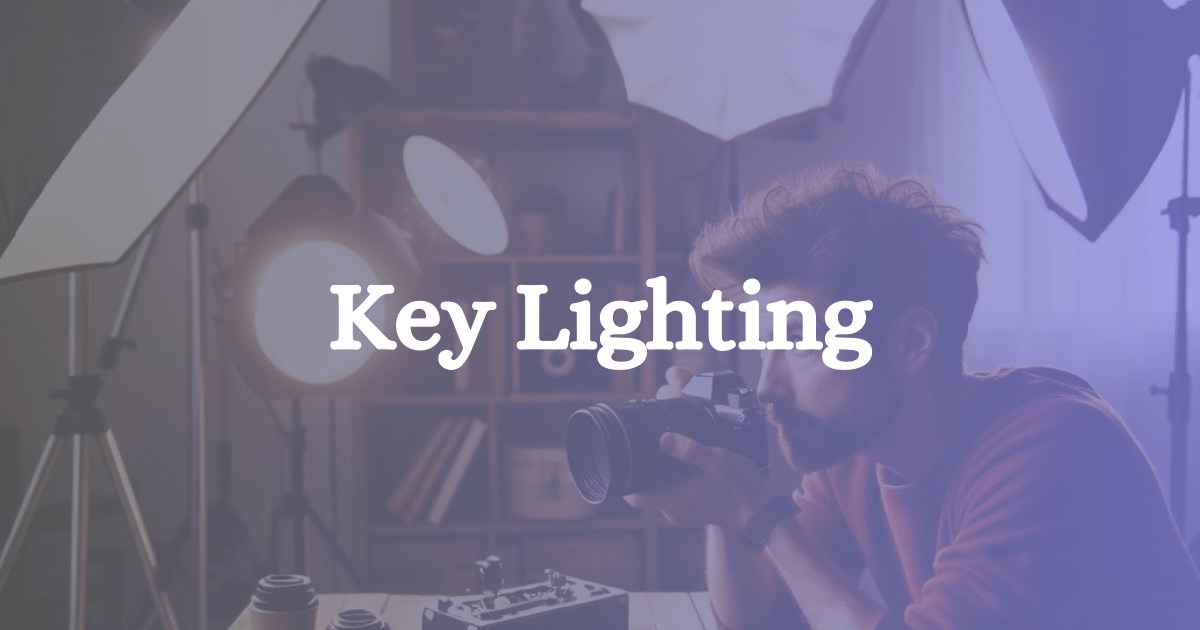What is a key light?
In the realm of photography and filmmaking, lighting plays a pivotal role in crafting the visual mood and enhancing the subject’s features. The key light stands out as the primary light source among the various lighting techniques employed. This foundational element illuminates the scene and defines the overall look of the shot. Its strategic placement and intensity can dramatically alter the perception of the subject, making it an essential tool in the arsenal of visual storytellers aiming to convey emotion and depth through their imagery.
In the realm of cinematography and photography lighting, the concept of a key light plays a pivotal role. A key light is the primary light within a lighting setup, serving to illuminate the subject most directly and profoundly. The purpose of the key light is to highlight the form and features of the subject, creating a foundation for the lighting style. This important light dictates the overall look and feel of the scene, influencing the contrast, color temperature, and shadow details. Whether utilizing natural light from sunlight or artificial indoor lighting, the cinematographer or photographer meticulously picks the position and brightness of this crucial lighting element to achieve the desired visual effect.
Complementing the key light are the fill light and sometimes a reflector, creating what is known as a three-point lighting arrangement. The fill light helps to soften and reduce the shadows produced by the key light, providing a more balanced illumination. The reflector, on the other hand, may serve to bounce light back onto the subject, enhancing the diffusion and further reducing harsh shadows. Advanced techniques involve adjusting the light’s diffusion to control its softness, allowing for different effects, from high contrast that accentuates textures to a softer light that smooths imperfections. Through this masterful manipulation of light, cinematographers and photographers can evoke various atmospheres, be it the high tension of a drama or the light-heartedness of a comedy, making the key light a versatile tool in visual storytelling.
Is key light important in photography for lighting a scene?
Key light in photography refers to the primary light source that illuminates a scene or subject. It is the foundation of lighting setups and crucial in shaping the overall look and feel. The key light is typically positioned at a 45-degree angle to the subject and can be adjusted to create different effects such as shadows, highlights, and contrast. Without a key lighting, a photograph may appear flat, dull, or lack dimension. A well-positioned key light can enhance the texture, depth, and mood of a scene, bringing it to life.
Whether shooting portraits, landscapes, or still life images, the key light is essential for setting the tone and creating visual interest. It helps to define the subject’s features, evoke emotions, and draw the viewer’s attention to specific elements within the frame. By controlling the intensity, direction, and color of the key light, photographers can manipulate the mood and atmosphere of a photograph, adding depth and complexity to their compositions.
How to create your illumination setup?
Creating your illumination setup requires careful planning and consideration of several factors. First, determine the purpose of the illumination – whether it’s for a photography shoot, a video recording, or simply for ambient lighting. Next, assess the space you will be working in and consider the natural lighting available. This will help you determine how many lights you will need and where to place them for optimal effect.
Once you have decided on the number and placement of lights, consider the type of lights you will need. LED lights are popular for their energy efficiency and ability to produce a bright, even light. Softboxes can help diffuse harsh light, while spotlights are great for creating dramatic effects. Whichever type of light you choose, make sure to also consider the color temperature to ensure consistency in your lighting setup.
Finally, don’t forget about lighting accessories such as light stands, reflectors, and diffusers. These tools can help you further customize your illumination setup and achieve the desired look. Experiment with different placement and settings until you find the perfect lighting setup for your project.
You can get your key light from Amazon here:





